PUB MASSACRE RECALLED
Thirty years later, the truth behind the Highgate Hotel massacre remains murky
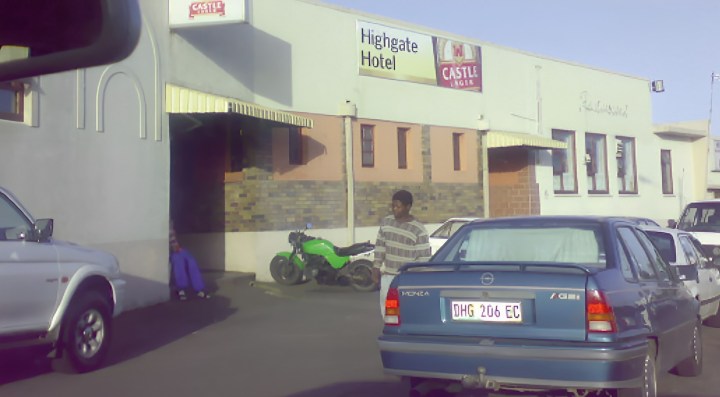
The Highgate pub shooting on 1 May 1993 left five dead and seven injured. Over in a matter of seconds, the violent incident would leave Karl Weber with unanswered questions and a lifetime of struggle.
For 30 years, one particular memory has troubled Karl Weber.
It is the image of a boot Weber stared at as he lay shot and wounded on the floor of the bar in the Highgate Hotel in East London.
The gunman, wearing a balaclava, was just metres away spraying the room with automatic rifle fire.
The then 37-year-old animal inspector recognised the footwear as being police-issue combat boots, and three decades later he still wants to know why the killer was wearing those particular shoes.
The shooting that night left five dead and seven injured. Over in a matter of seconds, it would leave Weber with unanswered questions and a lifetime of struggle.
Seventy-two hours after the shooting, surgeons amputated Weber’s left arm.
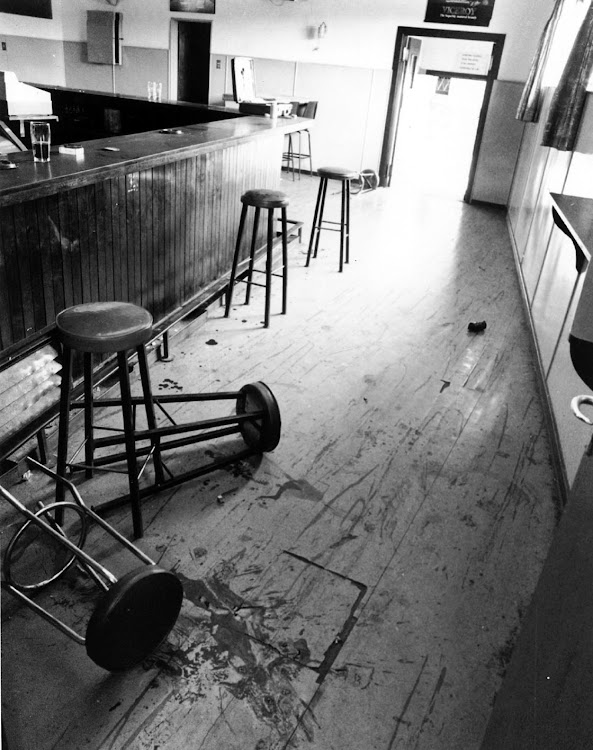
The aftermath of the Highgate Hotel shooting. (Photo: Courtesy of Daily Dispatch)
He would keep the use of his right arm with the help of eight screws and two plates inserted in his elbow.
Years of rehabilitation lay ahead.
“It has destroyed my life, and I am still battling,” he says.
Through the years, survivors have gathered for the anniversaries that mark the shooting – the passage of time ensuring that their numbers keep dwindling.
Shooters remain unknown
Thirty years down the line, the identity and motives of the shooters remain unknown.
Left in this void of unanswered questions are collections of conspiracy theories that point to rogue elements, possible state involvement and covert units bent on thwarting the march towards a black majority government.
It has left survivors with the sense that they have been abandoned by the authorities, even though the investigation into the shooting continues.
“It just goes on and on… we never get feedback, it is like we don’t exist,” says Weber.
Weber and his fellow Highgate survivors were forced to do their own investigations into the attack. They have spoken to people reportedly with knowledge of the attack, but the more they have dug, the murkier it has become.
What is known is that at around 10pm, at least two gunmen entered the working-class pub.

The aftermath of the Highgate Hotel shooting. (Photo: Courtesy of Daily Dispatch)
The men’s bar was hit first, then moments later someone opened fire in the ladies’ bar. The attackers wore balaclavas and when they withdrew from the men’s bar, they threw a tear gas canister.
Initially, it was thought that the PAC’s armed wing, Apla, had committed the attack as part of its so-called Operation Great Storm, which targeted public places including churches, restaurants and bars.
Apla theory
Days after the attack, Apla seemingly claimed responsibility for the attack when someone calling themselves Carl Zimbiri phoned The Citizen newspaper.
But the Apla theory doesn’t hold water.
“I’m convinced that it was not Apla… the modus operandi of the shooters does not match up with the modus operandi of other Apla attacks,” explains Theresa Edlmann, a researcher who works with the survivors of the Highgate shooting.
“The attackers wore balaclavas and the shooting was extremely accurate. Whereas if you think of just the St James Church massacre, as Letlapa (Mphahlela, former Apla director of operations), himself said, we couldn’t practice target shooting in urban areas, so the moment you pull the trigger the bullets mostly hit the ceiling.”
The AK-47 also wasn’t Apla’s weapon of choice – they used firearms such as the R4 assault rifle, stolen from arsenals in the former homelands.
And they never used teargas grenades. Mphahlela would also deny that Apla was involved in the shooting at Highgate and no one has been able to identify who “Zimbiri” was.
In the years following the attack, potential suspects have included a renegade Apla group, a right-wing unit, and third-force shooters tasked with disrupting the 1994 elections.
“I believe beyond a reasonable doubt that the state is behind this,” says Neville Beling, a Highgate survivor who was shot three times while drinking in the men’s bar.
Evidence lost
From the beginning, there were issues with the state’s investigation into the shooting. Ballistic evidence taken from the crime scene was lost and the investigation meandered at a snail’s pace.
In November 2022, Beling, knowing that ballistic evidence had been lost, handed over a bullet that doctors had removed from his body.
He was later told that the bullet had been misplaced, then rediscovered. Then he was informed the bullet would be useless for the investigation because of a coating of rust.
Both Beling and Weber have continued to look into the incident, hoping to uncover clues that would help point to the shooters. The Highgate Survivors’ Group even hired private investigators – the original investigator, Daryl Els, was hired by the group after he retired from the police.
Els would claim he found the shooters in Cape Town, but didn’t name them. Els has since died, believing all along that a third force was behind it.
“There is so much conjecture and misinformation, I don’t know who to believe any more,” says Edlmann.
Still, the investigation continues.
The NPA has prioritised the investigation of four apartheid-era cases including the Highgate shooting, the murder of the Pebco Three and the Cradock Four, and the death in detention of Imam Haron.
Yasmin Sooka, the executive director of the Foundation for Human Rights – which runs the Unfinished Business of the Truth and Reconciliation Commission programme that assists survivors to find justice – believes that the slow progress of the investigation is unlikely to be the result of a state cover-up.
“The reality is, of course, that these people are doing other work… they’re not dedicated only to the TRC cases and many of them don’t have the knowledge of the time period we’re talking about,” she explains.
The law firm Cliffe Dekker Hofmeyr is representing the Highgate survivors. The Unfinished Business of the TRC programme also has its own investigator, former Scorpions brigadier Clifford Marion, who is probing the case.
NPA spokesperson Luxolo Tyali said the Hawks had recently submitted the Highgate docket to the prosecuting authority and that it was under consideration. He added that Cliffe Dekker Hofmeyr should be updating the survivors on developments in the investigation.
“Time is the enemy here and we need to make sure that things move more quickly,” says Sooka. “And there should be enough evidence to indict people.”
Weber recently turned 67. His life after the shooting included a time when he had to rely on friends to help feed him, take him to the bathroom and dress him. Through intensive rehabilitation, he overcame all this. He even learned to drive a manual car and mastered tying his shoelaces with one hand.
And he eventually found peace with what had happened to him.
“You know, I have forgiven those guys, but I would love to meet them… that would be a dream come true. But I don’t think we are going to get there.” DM






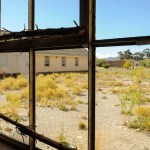
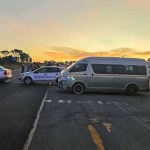

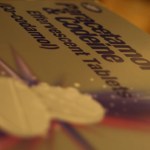







 Become an Insider
Become an Insider
Comments - Please login in order to comment.